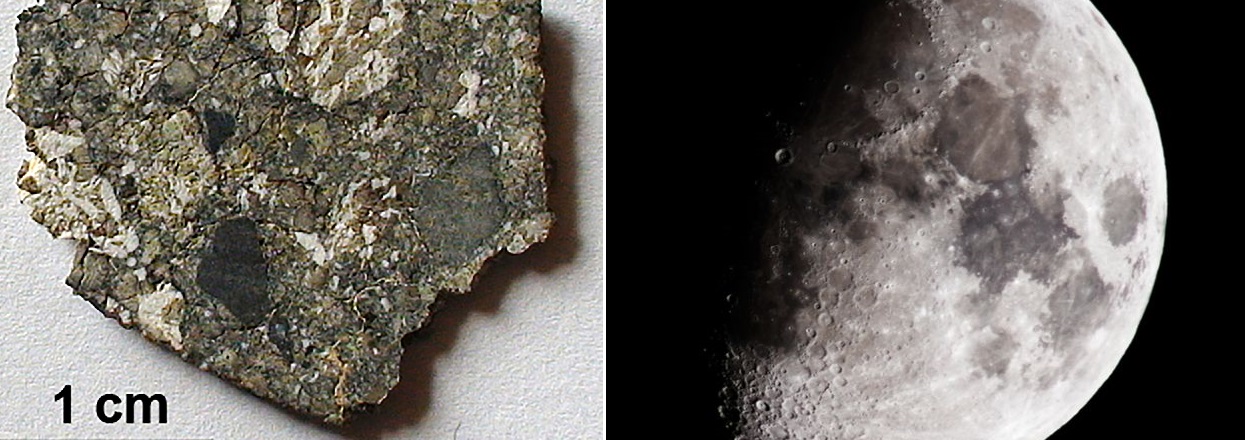Lunar Meteorite Suggests There’s Water Under the Moon’s Surface

A team of scientists from Japan led by Masahiro Kayama (Department of Earth and Planetary Materials Science at Tohoku University) has recently published a study on a lunar meteorite. Inside the meteorite, scientists discovered a mineral that can only form with the presence of water.
The study suggests that humans could explore the moon’s surface and find under its soil hidden water.
Scientists at the Tohoku University have found moganite inside the lunar meteorite that was discovered in the northwest African desert.
Moganite is similar to quartz, and it is a crystal of silicon dioxide, found on Earth in the sediments of alkaline fluids.
There Is Water Ice Under The Lunar Material
Kayama and his team believe that the mineral was formed on the moon’s surface in Procellarum Terrane, where the water that once was on the Moon evaporated due to exposure to strong sunlight. The team of researchers believes that under the lunar surface there could be crystals of water ice:
“For the first time, we can prove that there is water ice in the lunar material. In a moganite, there is less water, because moganite forms from the evaporation of water. That’s the case on the surface of the moon. But in the subsurface, much water remains as ice, because it’s protected from the sunlight.”
So far, scientists knew that the moon has water in a crater and in the thin atmosphere, but Kayama explains that their study proves there is water under the surface too.
Extracting Lunar Water to cover the Explorers’ Needs
It the estimate of water under the lunar surface is right (about 0.6%), then in the future, Kayama said that moon pioneers could extract water from the moon – almost 1.6 gallons per 36 cubic feet.
The researchers estimate that the water content in the lunar soil under the surface could be up to 0.6 percent. If that’s right, future moon pioneers could theoretically extract about 1.6 gallons of water per 36 cubic feet (6 liters per cubic meter) of lunar rock, Kayama said:
“This value means that water is very abundant,” he said. “It would be enough for future astronauts and people that could perhaps live on the moon in the future to extract enough water to cover their needs.”
Water ice under the lunar surface is present everywhere, not just at the poles, and it means that scientists could access the resources:
“We wouldn’t need to bring all the water for drinking and the fuel to return to Earth or to travel to Mars, for example, with us from Earth. If water is abundant in the lunar subsurface, we can easily use it.”
0 comments